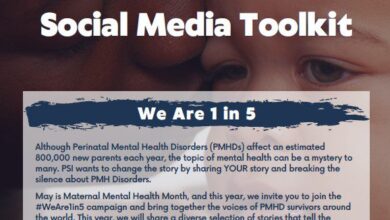What You Need To Know About Cramping and Pain After Birth

Uterine contractions after giving birth, otherwise known as afterpains or postpartum contractions, are a normal part of recovery but can also cause discomfort for new parents.
As a Registered Nurse, I have witnessed firsthand the experiences of countless new moms and expectant parents navigating the postpartum period and the parenthood journey.
One of the biggest surprises for newborns is often the afterpains, cramps, or postpartum contractions. I know what you’re thinking: “I just went through labor and delivery, I brought my baby into the world, and now I’m going to have more contractions?”
Yes, it’s true, but stay with me! Because knowledge is power, and knowing what to expect will set you free start your postpartum journey with confidence.
Note: this article is for informational purposes only and is not intended as medical advice. Please consult your health care provider with any questions or concerns.
What are postpartum contractions?
Postpartum contractions are often described as an uncomfortable cramping sensation in the lower abdomen After giving birth. The feeling can be similar to that of a menstrual period that comes and goes.
Not everyone will feel postpartum contractions. There may be more of them commonly felt in those who have given birth before.
If this is your first time giving birth, the cramping sensation may be milder, and you may not feel it, but this does not mean that your uterus is not healing and decreasing in size.
It’s important to remember that no matter how you give birth (vaginally or by cesarean), you may still experience cramping during postpartum recovery.
But why do contractions happen after childbirth, and what is their purpose?
After your baby is born, your body starting the process of involution. This is the process of returning your uterus to its pre-pregnancy size.
The uterus stretches during pregnancy to accommodate and make room for your growing baby. Now the uterus has to shrink back. The body is incredible and knows what to do!
to do this, the uterus contracts and relaxes involuntarily, which can cause a cramping sensation. Another critical purpose of postpartum contractions is to help control bleeding. So even though this cramping may be uncomfortable, it’s a good thing and serves an important purpose.

How long do the cramps last?
It’s going to different from person to person. Afterpains are usually worst on the second or third day after you give birth, then they slowly subside. You can notice them up to one week to 10 days after delivery.
Breastfeeding and postpartum contractions
If your baby is breastfed, you may be more likely to notice these cramps when your baby is feeding or pumping. This is because the breastfeeding triggers the hormone oxytocin to release or “let down” the milk, which is same hormone that causes the uterus to contract.
What can I do to reduce postpartum cramping?
Here are some things you can do help reduce discomfort You may be experiencing from postpartum cramps.
- Warm compresses
- Tingling medicine
- Rest
- Positioning
Warm compresses
A warm compress on the lower abdomen help promote circulation and relieve cramps. For this purpose, you can consider something like a warm/cool neck and body wrap. In addition to abdominal cramping, this wrap can be used for neck and back tension, cesarean healing, and more.
Tingling medicine
Your health care provider can make recommendations over-the-counter pain relieverssuch as Ibuprofen, to help with pain.
Rest and relaxation
Prioritize your rest during the postpartum period is very important for recovery. Like doing, deep breathing can help you cope with the cramping.
Positioning
Finding a comfortable position, such as lying on your side and using pillows for support, discomfort can be reduced by decreasing the pressure placed on the uterus.

When to seek help with postpartum contractions
Postpartum cramping is a normal part of recovery. However, if you are experiencing any severe pain and it becomes difficult to cope including, it is important to consult your health care provider.
Other signs to contact your healthcare provider, or report to a healthcare center, include:
- Excessive bleeding (passing large clots and/or soaking more than one pad in an hour)
- Dizziness or lightheadedness
- Feverish
- Foul-smelling discharge
Final thoughts on postpartum cramping and pain after childbirth
Each person’s postpartum experience will be unique, and seeking professional guidance is key to personalized care. In time and rest, pains subsided after childbirthand your body will continue to heal.
Remember that knowledge is power. I see you researching and putting your time and energy into learning what to expect in the postpartum period so you can approach motherhood and parenthood with confidence. This new role is a big job, and you are doing great in it.
Other articles that may help you
Hello Postpartum participates in the Amazon Services LLC Associates Programan affiliate advertising program designed to provide a way for sites to earn advertising fees by advertising and linking to Amazon.com.






